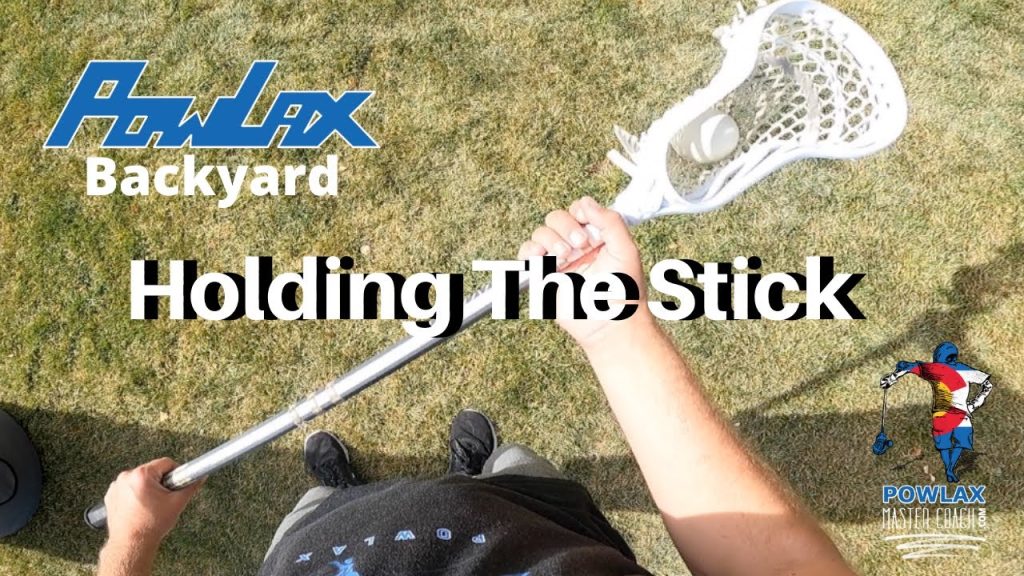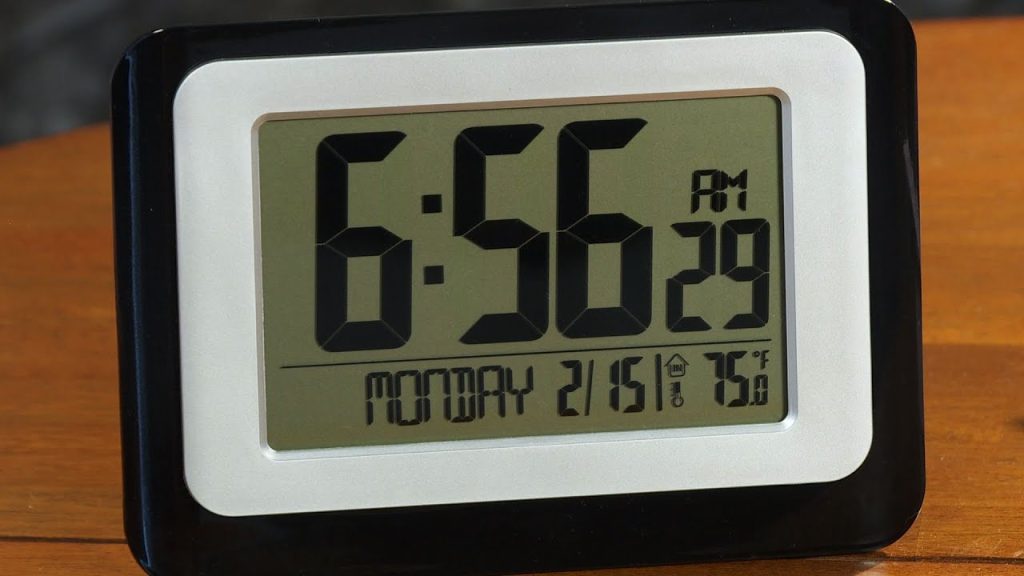Holding a lacrosse stick properly is crucial for beginners. It helps improve your game significantly.
Lacrosse is an exciting, fast-paced sport. But, mastering the basics is key to enjoying it fully. One essential skill is learning how to hold a lacrosse stick. This fundamental aspect sets the foundation for better control, passing, and shooting. Whether you are new to the sport or looking to improve, understanding the correct grip and hand placement is vital.
This guide will walk you through the steps to ensure you hold your lacrosse stick correctly. By the end, you will feel more confident and ready to take your game to the next level. Let’s dive in and explore the best techniques for holding a lacrosse stick!

Credit: www.youtube.com
Choosing The Right Stick
Selecting the right lacrosse stick is crucial for your game. It affects your grip, control, and overall performance. So, let’s look at the key factors to consider.
Stick Length And Material
The length of your lacrosse stick varies based on your position. Attackers and midfielders usually use shorter sticks, around 40 to 42 inches. Defenders need longer sticks, about 52 to 72 inches. Goalies have sticks that range from 40 to 72 inches.
Materials also play a significant role. Aluminum sticks are lightweight and durable, making them a popular choice. Composite sticks offer flexibility and strength. Titanium sticks are the most durable but can be heavier.
| Position | Stick Length (inches) | Material |
|---|---|---|
| Attackers/Midfielders | 40-42 | Aluminum, Composite |
| Defenders | 52-72 | Titanium, Composite |
| Goalies | 40-72 | Aluminum, Composite |
Grip And Comfort
A good grip is essential for control. Look for rubberized handles or tape wraps to enhance grip. Your stick should feel comfortable in your hands.
Test the stick by holding it in different positions. Make sure it doesn’t slip. Some players prefer a smooth handle for quick hand movements, while others like a textured grip for better control.
Try different grips to see what works best for you. Comfort is key.
- Rubberized handles
- Tape wraps
- Smooth handles
- Textured grips

Credit: www.wikihow.fitness
Basic Hand Placement
Learning the basic hand placement is crucial for any lacrosse player. Proper hand positioning on the lacrosse stick ensures better control and precision. It helps in executing passes, shots, and defensive maneuvers effectively.
Top Hand Position
The top hand plays a vital role in controlling the stick. Place your top hand near the middle of the stick. This position provides balance. Hold the stick lightly. Avoid gripping too tightly. Your thumb should point towards the head of the stick. Fingers should wrap around the shaft. This grip allows for quick adjustments and fluid movements.
Bottom Hand Position
The bottom hand provides power and stability. Position your bottom hand near the end of the stick. The bottom hand does most of the work during shots and passes. Hold the stick firmly but comfortably. Ensure your knuckles are facing the head of the stick. This grip offers better control and strength.
| Hand | Position | Function |
|---|---|---|
| Top Hand | Middle of the Stick | Control and Balance |
| Bottom Hand | End of the Stick | Power and Stability |
Remember, practice makes perfect. Regularly adjust your hand positions during practice. This will help you find the most comfortable and effective grip for your play style.
Proper Grip Technique
Learning the proper grip technique is crucial for playing lacrosse. A good grip ensures better control and accuracy. Let’s break down the steps for the perfect grip.
Thumb Placement
Start by placing your top hand near the middle of the stick. The thumb of your top hand should point straight down the shaft. This helps with stability and control.
Make sure your thumb is firm but not too tight. You want a balance between control and flexibility. Your thumb should act as a guide, helping to maneuver the stick smoothly.
Finger Positioning
Your fingers play a key role in gripping the stick. For your top hand, wrap your fingers around the shaft. Keep a relaxed grip. The fingers should form a natural curve around the stick.
The bottom hand should be placed near the end of the stick. Grip it lightly to allow for easy movement. Your fingers should be loose, allowing for quick adjustments.
Both hands should work together. The top hand guides the stick, while the bottom hand provides power. Practice moving the stick to get comfortable with this grip.
Adjusting Your Grip For Different Skills
Properly holding a lacrosse stick can enhance your skills. Adjusting your grip helps improve passing, shooting, and defending. Practice different grips to find what works best for each move.
Learning how to hold a lacrosse stick properly is crucial. Different skills require different grips. Adjusting your grip will improve your performance. Let’s explore how to hold the stick for various skills.Passing And Catching
For passing and catching, grip the stick with both hands. Place your dominant hand near the bottom. Your other hand should be near the top. Keep your hands about shoulder-width apart. This grip gives you control and precision. Practice moving your hands smoothly.Shooting And Cradling
Shooting and cradling need a firm grip. Your dominant hand should be lower on the stick. Your non-dominant hand should be near the top. This grip helps with power and accuracy. Ensure your hands are slightly closer together. This allows for better wrist movement. Practice to develop muscle memory. “`Common Mistakes To Avoid
When learning how to hold a lacrosse stick, many players make common mistakes. These errors can affect their performance and increase the risk of injury. Understanding these mistakes and how to avoid them is crucial for improving your skills.
Overgripping The Stick
One common mistake is overgripping the stick. This means holding the stick too tightly. Overgripping can limit your wrist movement. It can make it harder to pass and shoot. Your hands should hold the stick firmly, but not tightly. Think of it like holding a golf club or a tennis racket. You need control, but also flexibility.
Incorrect Hand Placement
Incorrect hand placement is another frequent mistake. Your top hand should be near the stick’s top. Your bottom hand should be around the stick’s middle. This position gives you better control and power. When your hands are too close together, you lose leverage. This makes it harder to pass and shoot accurately. Practice finding the right hand placement for better control and efficiency.
Exercises For Improving Grip
Improving your grip on a lacrosse stick is essential for better control and performance. Regular exercises can enhance your strength and hand-eye coordination, leading to a more confident grip. Below are some effective exercises and drills that can help you improve your grip on a lacrosse stick.
Strengthening Exercises
Strengthening your grip can be achieved through various exercises. These exercises focus on enhancing the muscles in your hands and forearms. Here are some useful exercises:
- Wrist Curls: Sit on a bench and hold a light dumbbell. Rest your forearm on your thigh with your wrist hanging off the edge. Curl the weight up and down, focusing on your wrist movement.
- Grip Squeezes: Use a grip strengthener or a tennis ball. Squeeze it as hard as you can, hold for a few seconds, and release.
- Finger Extensions: Place a rubber band around your fingers. Spread your fingers apart against the resistance.
Hand-eye Coordination Drills
Improving hand-eye coordination is crucial for a better grip on the lacrosse stick. These drills can help you develop this skill:
- Wall Ball: Stand a few feet from a wall. Throw a lacrosse ball against the wall and catch it with one hand. Switch hands after each throw.
- Juggling: Start with two balls and juggle them using one hand. Gradually add a third ball to increase the difficulty.
- Reaction Drills: Have a partner throw a ball toward you at different speeds and angles. Focus on catching the ball with one hand.
These exercises and drills can significantly improve your grip on a lacrosse stick. Consistent practice will lead to better control and confidence on the field.
Advanced Techniques
Learning to hold a lacrosse stick properly can elevate your game. Mastering advanced techniques can set you apart. This section covers two key advanced techniques: one-handed cradling and quick stick movements.
One-handed Cradling
One-handed cradling increases your maneuverability and speed. It allows you to move freely while protecting the ball. Follow these steps:
- Grip the stick with your dominant hand.
- Place your hand near the middle of the shaft.
- Keep your elbow slightly bent.
- Use your wrist to move the stick back and forth.
Practice this technique daily to build muscle memory. It helps you maintain control under pressure.
Quick Stick Movements
Quick stick movements are essential for fast passes and shots. They enhance your reaction time and accuracy. Here are some tips:
- Hold the stick with both hands.
- Keep your top hand near the head of the stick.
- Use your bottom hand to guide the direction.
- Practice snapping your wrists for quicker releases.
Quick stick movements allow you to make faster plays. They are crucial for catching and passing in tight situations.
By incorporating these advanced techniques into your practice, you will become a more skilled player. Remember, consistency is key. Practice these techniques regularly to see improvement.
Credit: www.playsportstv.com
Maintaining Your Lacrosse Stick
Maintaining your lacrosse stick is essential for optimal performance. Keeping it in good condition will ensure your stick lasts longer and performs better. Here are some tips to help you maintain your lacrosse stick effectively.
Cleaning And Oiling
Regular cleaning is important. Wipe down your stick after each game or practice. Use a damp cloth to remove dirt and grime. Avoid using harsh chemicals, as they can damage the stick.
Oiling the stick helps keep it in top condition. Apply a light coat of oil to the head and shaft. This prevents cracking and keeps the wood supple. Use a lacrosse-specific oil for best results.
Replacing The Grip
The grip on your lacrosse stick can wear out over time. A worn grip can affect your control and comfort. Replace it as soon as you notice wear and tear.
To replace the grip, follow these steps:
- Remove the old grip tape carefully.
- Clean the shaft with a damp cloth.
- Wrap new grip tape tightly around the shaft.
- Ensure there are no bubbles or loose ends.
There are various grip tapes available. Choose one that suits your playing style and preference.
Frequently Asked Questions
How Do You Properly Hold A Lacrosse Stick?
Hold the lacrosse stick with your dominant hand near the top. Place your non-dominant hand at the bottom. Ensure a firm grip.
What Is The Right Hand Position On A Lacrosse Stick?
Your dominant hand should be near the top, about a foot from the head. Your non-dominant hand should be at the bottom.
How Should Beginners Grip A Lacrosse Stick?
Beginners should grip the lacrosse stick with a firm hold. Place the dominant hand near the top and non-dominant hand at the bottom.
Why Is Hand Placement Important In Lacrosse?
Proper hand placement ensures better control and accuracy. It helps in passing, shooting, and maneuvering the stick effectively.
Conclusion
Holding a lacrosse stick correctly is key to improving your game. Practice regularly to get comfortable with your grip. Remember to keep your hands spaced apart on the stick. This ensures better control and power. Adjust your grip based on the situation during play.
Proper grip can make a big difference in your performance. Stay patient and keep practicing. With time, it will feel natural. Enjoy the game and keep improving your skills.


